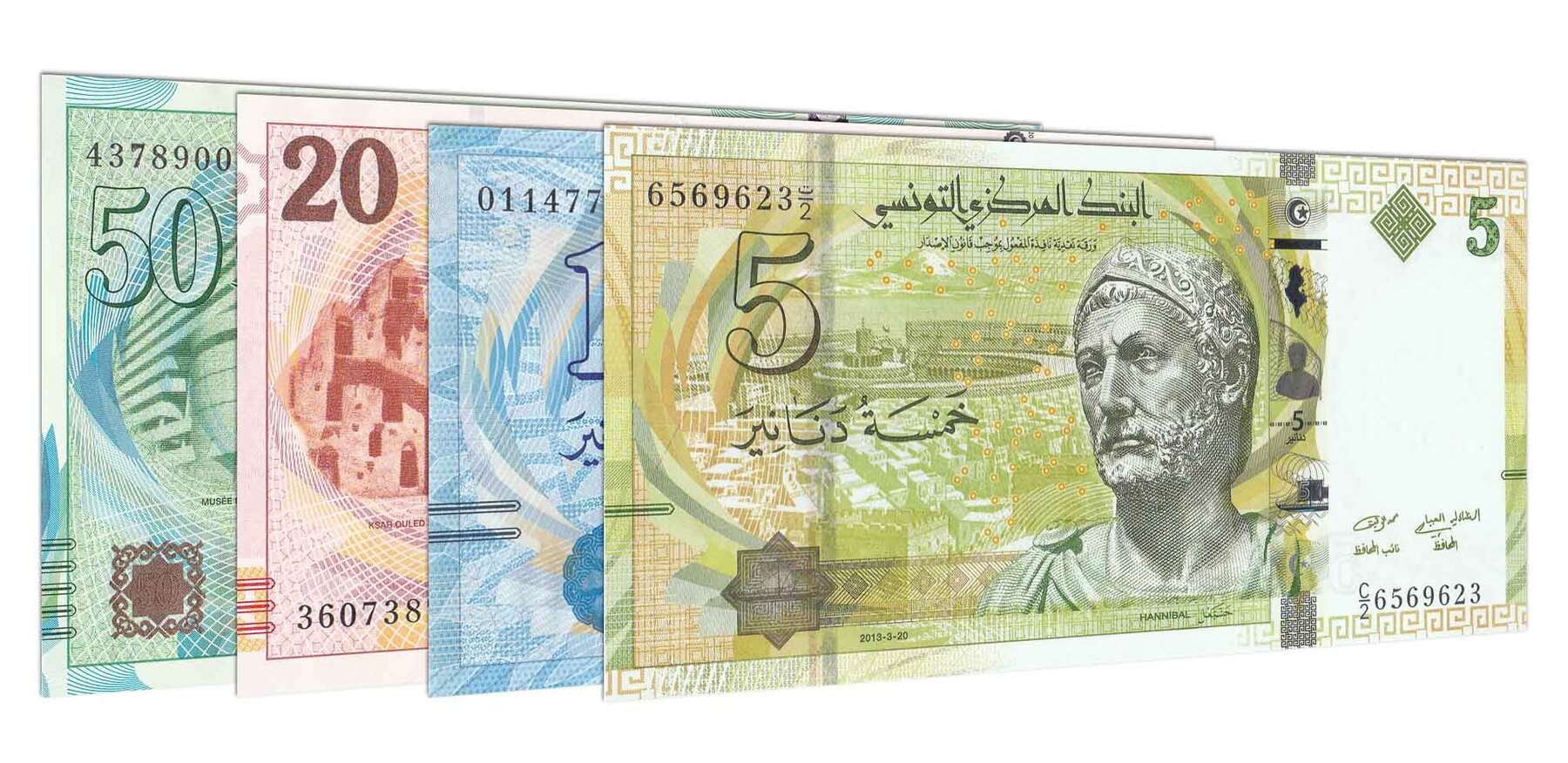Five (5 ) of Africa’s biggest currency symbols refer to the symbols of the strongest African currencies. According to Nasonga, these are the top 5 Africa’s biggest currencies: 1. Tunisian Dinar 2. Libyan Dinar 3. Ghanaian Cedi 4. Moroccan Dirham and 5. Botswana Pula. This list is based on their exchange rate to the dollar.
Learn the Secret of Forex Trading, Click here to download a free e-book now
The focus of this article is to tell the fascinating stories behind how these 5 Africa’s biggest currency symbols were derived.
Table of Contents
The Fascinating Stories Behind 5 of Africa’s Biggest Currency Symbols
-
The Tunisian Dinar
At the time of writing this article, 1 Tunisian Dinar (TND) is equivalent to $0.33 USD. The Tunisian dinar was introduced in 1960. It replaced the Tunisian Franc which was the official currency prior to the time. Information retrieved from world atlas reveals that the Tunisian Dinar symbol and name was inspired by the Roman denarius, which was used in the antic territory of Carthage, believed to be the present-day Tunisia. Further information reveals that based on the fact that Tunisia was a former French colony, her new currency, the TND was expected to be devalued against the French Franc. But instead of being devalued, it was rather pegged to the US dollar at a rate of 1:1.90. Another interesting fact about the Tunisia Dinar is that over the years, it has experienced a low rate of inflation compared to her neighboring countries. This has made the currency less volatile and ranks highest among the 5 Africa’s biggest currency symbols.
-
Libyan Dinar
Investopedia posits that numerous currencies had been used in Libya before her independence. During the Italian colonization, it used the Italian Lira, and at some point in her history, it is revealed that the Algerian Franc and the Egyptian pound were also used. In 1971, the Libyan Dinar replaced the pound introduced just after her independence in 1951. The Libyan Dinar is symbolized as LD which is the acronym for the currency, Libyan Dinar.
3 Facts about the Libyan Dinar
- The Libyan Dinar was launched in 1971 by the Central Bank of Libya
- The Libyan Dinar ISO 4217 code is “LYD
- The Libyan Dinar is subdivided into 1000 dirham (درهم)
-
Ghanaian Cedi
The Ghanaian Cedi is symbolized as GH₵ with the GH representing the first two letters of the country’s name and the C representing Cedi but with a stroke.
Remitly provides some fun facts about this currency. But one fact that relates to this article is that the Cedi in the Ghanaian language means shell. This was inspired by the precolonial period when the Arabs who visited the land brought in cowries as a means of money.
Quoting the article, “The Akan word for cowry is cedi. This was the name chosen for the new currency when the nation of Ghana moved away from the Ghanaian pound. A few of the early coins bore a picture of a cowry shell.”
Also, An article titled ‘Bring Back The Cedi (₵) Sign’ by Nathaniel N.O echoes the importance of saving the currency’s symbol and compares it to the uniqueness of the dollar sign $. Cedi is coined from the Akan Word ‘sidiɛ,’ meaning porcelain-like cowry shells.
-
Moroccan Dirham
The Moroccan Dirham ranks as the 4th amidst the top 5 Africa’s biggest currency symbols. According to SmallWordfs, Moroccan currency is recognized by the symbol .د.م. and it is referred to as ‘dh’ in English. The international currency code of the dirham is MAD. The banknotes have both a paper banknote and polymer (plastic) banknote series in circulation.
3 Facts about the Moroccan Dirham:
- Dirham is the same currency that is used in Western Sahara
- It’s made by the Bank Al-Maghrib, which is the Central Bank of Morocco
- Officially, it’s illegal to export out of the country
The currency and symbol draws its inspiration from the era of the Byzantine empire where a currency known as Drachm was spent.
Smallworldfs further reveals that “the word Dirham originally came from the word denarius, which was an ancient Roman silver coin (originally worth ten asses!). Historically, in Morocco, gold, silver and copper coins were used, and they were called: benduqi, dirham and falus.”
-
Botswana Pula
The Botswana Pula ranks as the 5th amongst Africa’s biggest currency symbols.
According to Bank of Botswana, “The design of the currency has been consistently based on symbolic illustration of the socio-economic, political and cultural make-up of Botswana as a country, including the importance of democracy, tourism and mining.”
4 Facts about the Botswana Pula
- The Botswana Pula is simply symbolized by the letter ‘P’ which is the first letter of the currency’s name.
- Pula literally means “rain” or “blessing” in Setswana
- Pula was introduced on August 23, 1976 to replace South African Rand.
- Apart from Botswana, Pula is also used in Zimbabwe
Final thoughts
It has been observed that older currency symbols have evolved slowly, often from previous currencies. This means that their ideas are not original. They draw inspiration from the past. But in recent and modern times, symbols of currencies have been made simple where most are simply abbreviations or just a letter from the first letter of the currency name like Africa’s biggest currency symbols.
Risk Disclaimer
Deriv offers complex derivatives, such as options and contracts for difference (“CFDs”). These products may not be suitable for all clients, and trading them puts you at risk. Please make sure that you understand the following risks before trading Deriv products: a) you may lose some or all of the money you invest in the trade, b) if your trade involves currency conversion, exchange rates will affect your profit and loss. You should never trade with borrowed money or with money that you cannot afford to lose.

